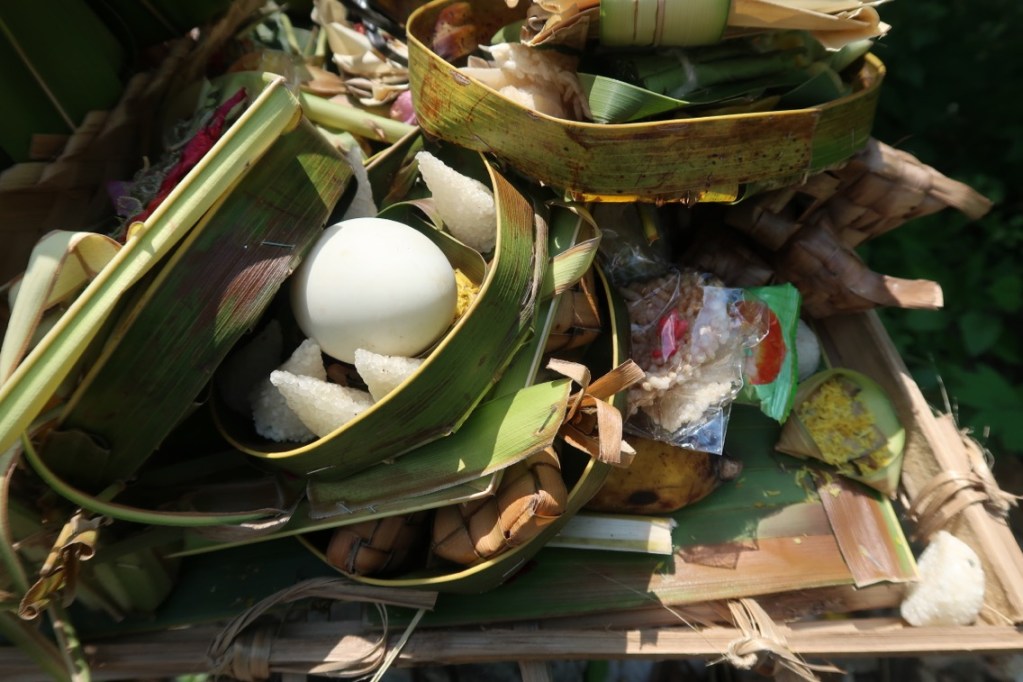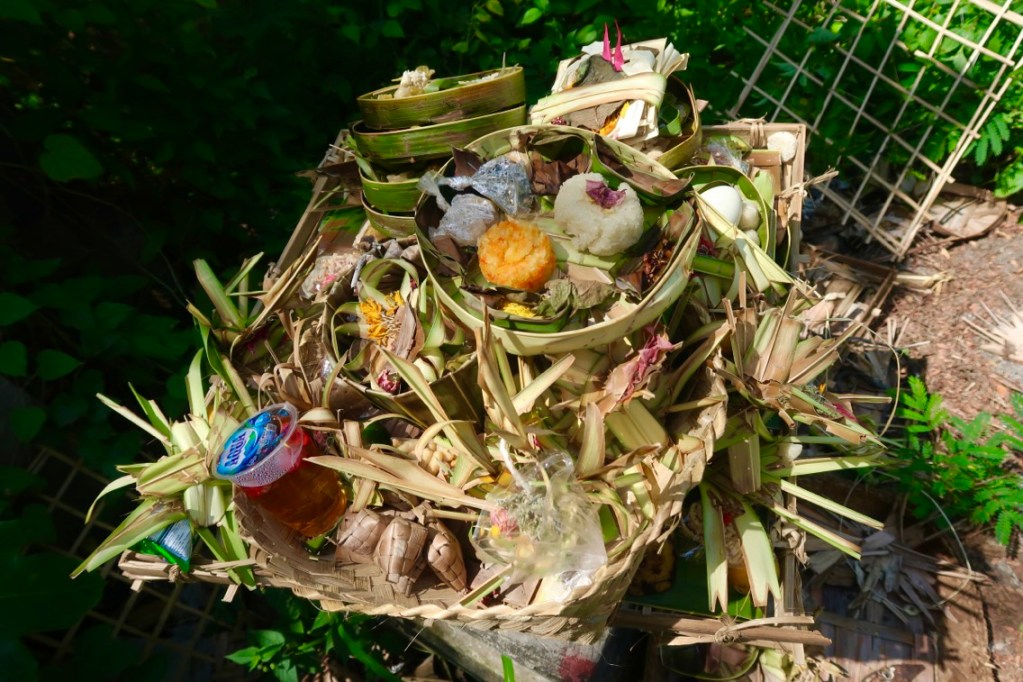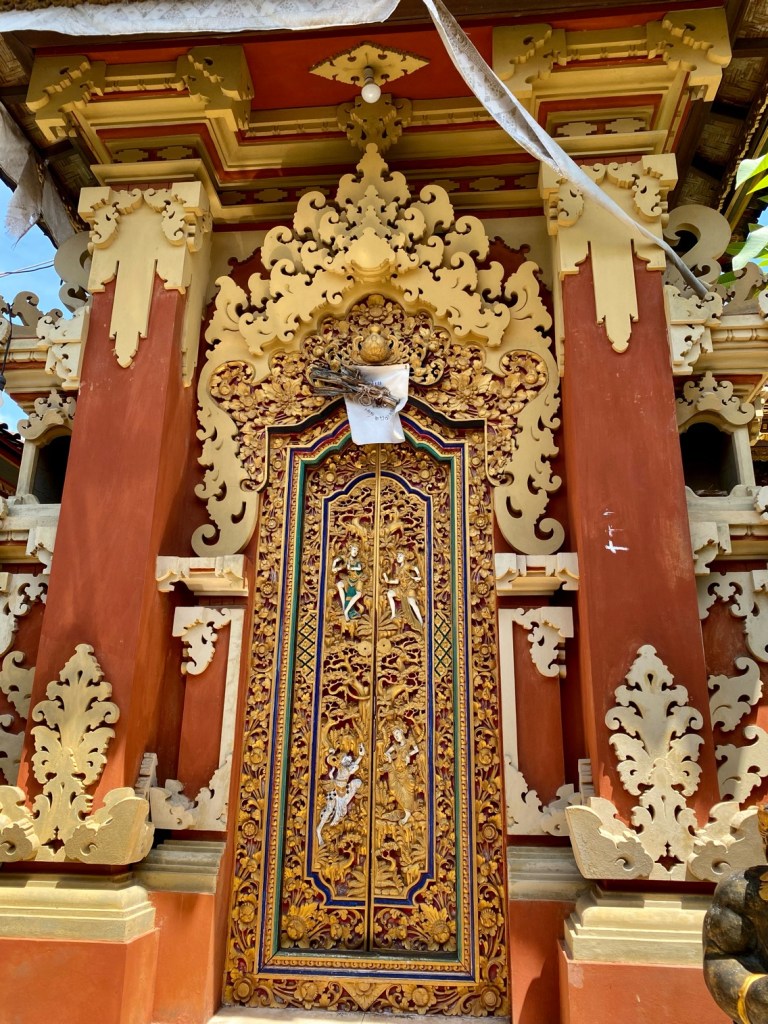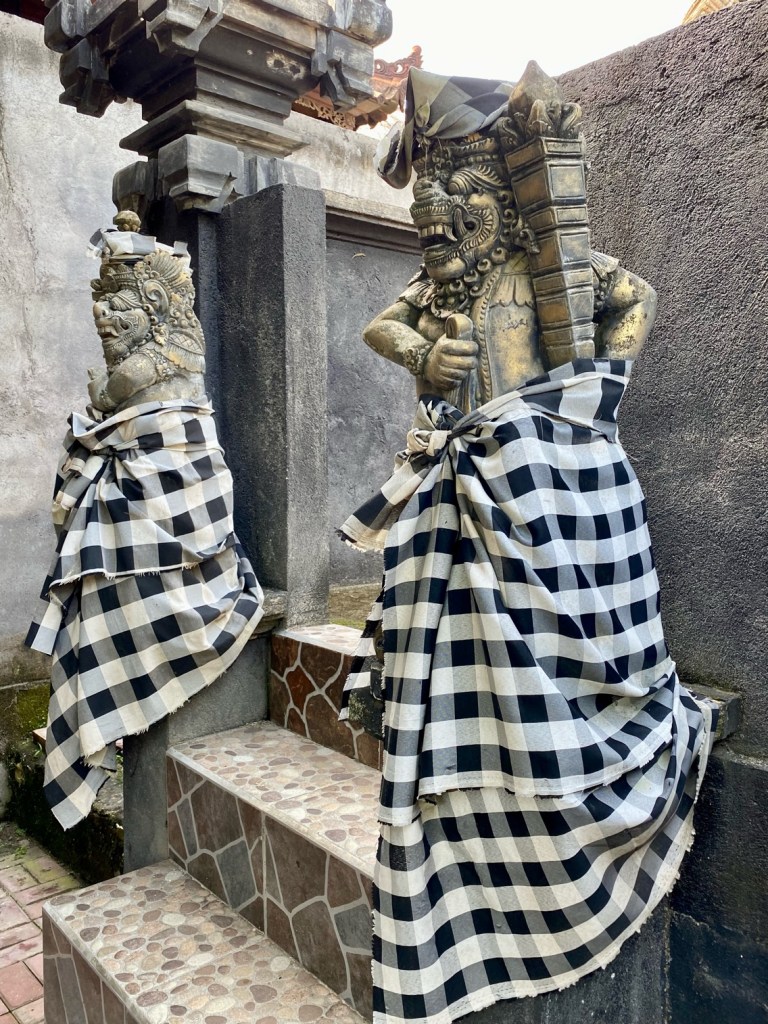Honoring The Spirits, and Umbrellas Over The Graves in Nusa Lembongan, Indonesia































Honoring The Spirits, and Umbrellas Over The Graves in Nusa Lembongan, Indonesia
Nowhere else in the world have I seen such devotion to the spirit world as I have seen in Bali and its surrounding islands.
In Nusa Lembongan and Nusa Ceningan, there are shrines and beautiful temples in every single house, restaurant, hotel and street.
While Hindu in origin, the locals now practice a unique religion that is endemic to the islands, with specific holidays and celebrations that are not seen elsewhere in the world.
The village temples (called Pura) are built in a most beautiful design that is unique to these islands.
The stone gates are usually elaborately carved with Hindu motifs, flowers, waves, or animal and bird motifs, and they are always open on the top.
Two stone guardians stand on both sides of the entrance, with dragons lining both sides of the stairways, and winged Garudas holding the corners of the walls.
Inside the temple complexes, there is usually a stage for ceremonies with beautifully carved wooden doors behind the stage.
There are also small shrines inside the temples that are made of wood, often with colorful wooden carvings of Hindu deities dancing, playing music or riding a water buffalo.
These shrines always have thick thatched roofs with a crown at the top of a lion’s head or a mythical bird.
Signs in front of these temples ask you not to enter, unless you are wearing a traditional Balinese sarong for both men and women.
Women who are menstruating are also asked not to enter.
The locals burn incense and bring small offerings every single morning to these temples, and sometimes at the end of the day as well.
Small baskets full of gifts to the Spirits are laid before the gate or in a special shrine at the corner of each house and place of business.
In those baskets they put a selection of things that they themselves would like to always have in abundance.
It might be cooked rice or rice cakes, sweet crackers, an egg, candy and sweets, a cigarette, soft drinks, alcohol, fruit, flowers, a small amount of money, or other goodies.
These small baskets of offerings are also placed on the engines of cars and scooters each evening, to bless the engine so it will work well, and to bless the drivers so they will escape any accidents.
In Bali and the surrounding islands like Lembongan and Nusa Penida, the dead are never forgotten.
They are not even believed to be dead.
When their journey on this earth is done, they simply go into the spirit world where they can guide, help and assist those living on earth, or they can harm and take revenge for any wrong doing.
Naturally, these spirits need to be calmed, remembered and worshipped, by festivals and daily offerings.
The Balinese calendar is full of days of celebrations and parades, used to connect and make things right with the ancestral spirits, living in the Spirit World.
Beside worshiping the Hindu gods, major festivals are held at the times that the ancestral spirits are believed to be visiting the Earth.
During a 10 day period, each family must be hospitable to the spirits through rituals of prayers and offerings to welcome the spirits back to the material realm.
People line the streets with “Penjor” (bamboo poles with offerings hanging at the ends) and a major parade is held at the main street of the village or town.
There are many yearly parades and festivals such as this, connecting the people with the spirit world.
Great processions march through the streets carrying papier-mâché monsters or statues of demons, which are burnt at the end of the ceremony.
Cymbals and firecrackers accompany these procession to frighten off evil spirits.
The effigies of the demons, representing the mistakes of the past year will be burnt, hopefully giving people a clean slate to do better in the upcoming year.
On Nusa Lembongan, we saw a tradition that we have not seen before.
The graves along the road are covered by umbrellas.
It is said that the umbrellas protect the dead from the very hot island sun.
Some of the graves were made of stone, some only had a small stone with the name of the dead next to a pile of stones, and some were graves of small children, as they had no headstone, just a pile of toys, clothes and even a baby carriage, on top of a mound of stones.
Some people who do not have enough money to make daily offerings of rice and candy, simply put flowers or leaves from a tree on the engine of their cars or scooters, to show the gods that they are not forgotten, and to beseech them for blessings.
Keeping the ancestral spirits alive and honoring them in their lives is also practiced in Japan, Korea and China, but each place has its own unique way, with different celebrations and ceremonies.
The stone temples of Bali are suited for the salty air and the relentless island sun, as they look graceful even as they age.
It is soothing to spend some time on a small island where there is no crime, almost everyone knows one another and you can see the naturalness of people who are living and thriving by the sea.
They eat tropical fruit, fish and rice which they grow on the islands in rice paddies.
They do not use suntan lotions, yet they never burn from their daily exposure to the sun.
They are not foolish enough to sunbathe.
They sit in the sun only to dry up after swimming or fishing or if they feel cold, otherwise, they sit in the shade.
The sun and sea are not seen as potential dangers to them, and so they live in harmony with the elements.
Their religion strengthens their communities and give them reason to meet and celebrate.
From Nusa Lembongan with love,
Tali